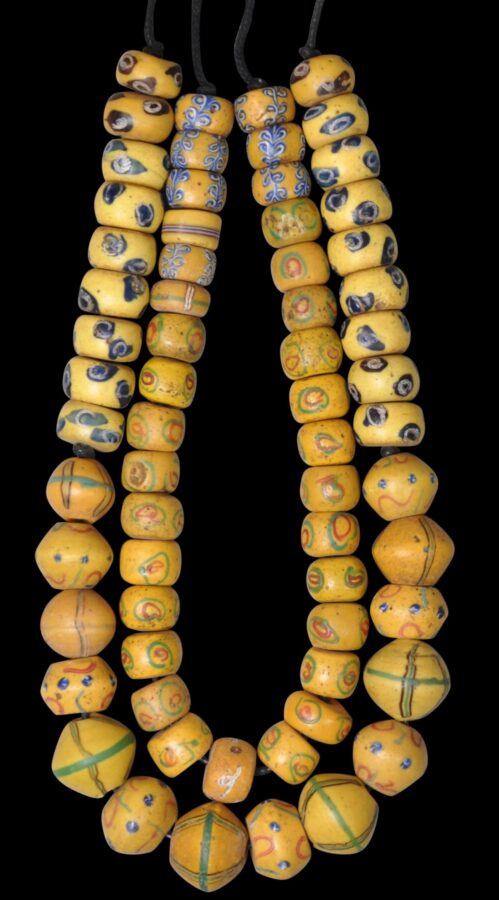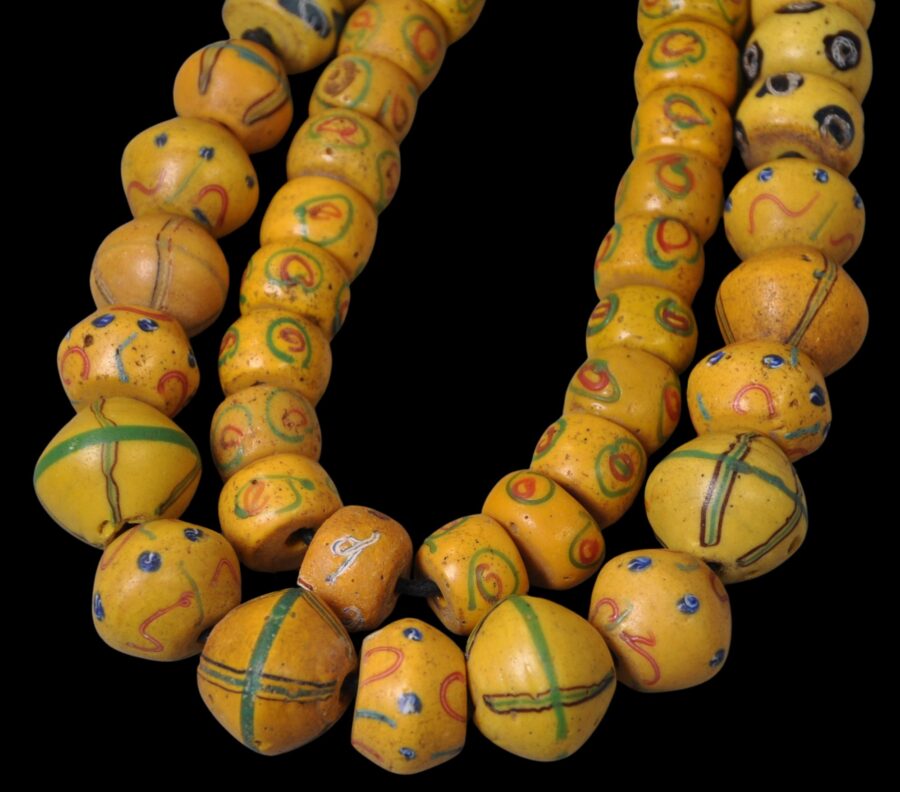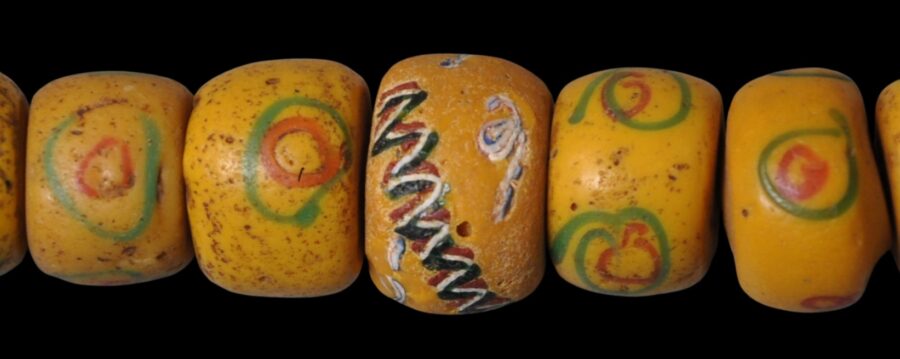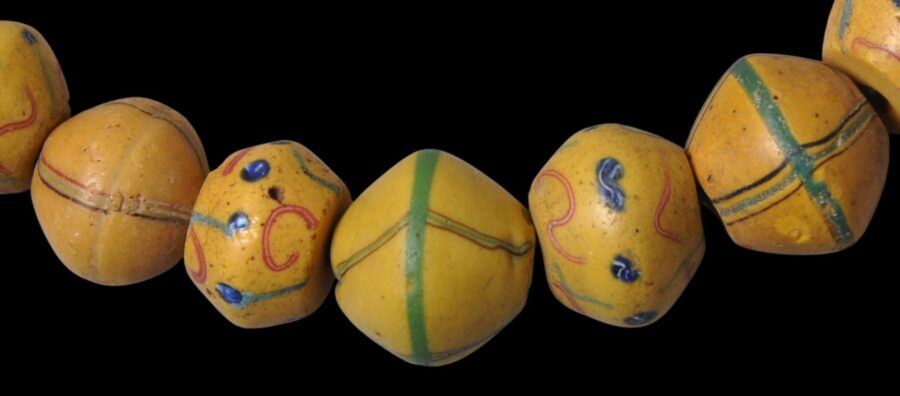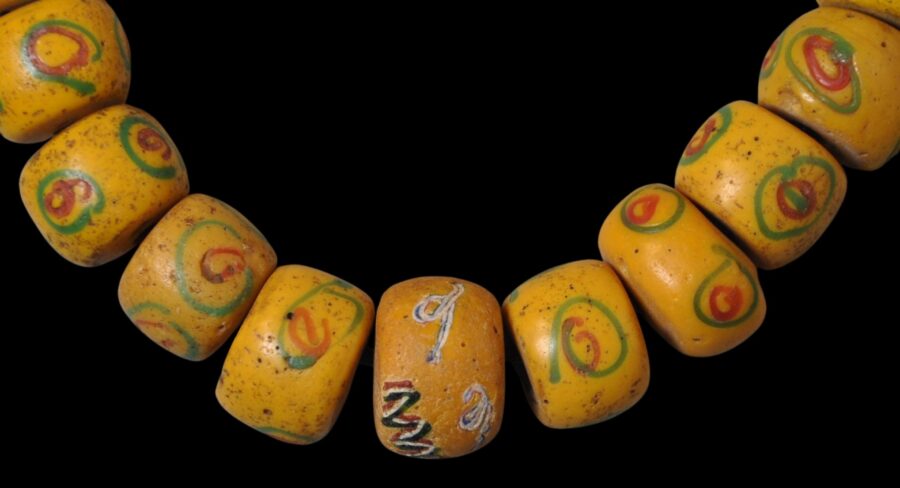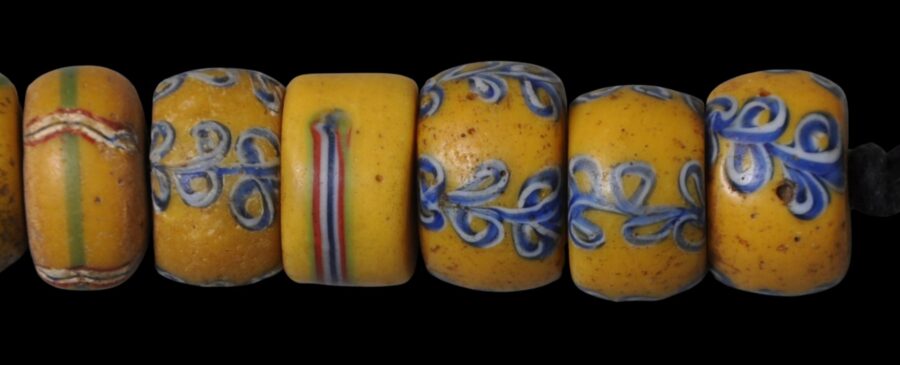Enquiry about object: 9833
Two Strands of Venetian Trade Lampwork Beads for the African Market
Venice for the colonial West African market late 19th century
length of strand: 32.8 and 41.2cm, combined weight: 362g
Provenance
private collection, Canada. The collection was carefully assembled over the last 50 years.
These two strands of yellow-ground beads were produced in Venice at a similar time – at around the end of the 19th century – for export to colonial African markets.
To satisfy local demand, the Venetian beadmakers imitated bead types then produced in Africa such as glass bodom beads, which typically were large and yellow in colour.
The small, more barrel-shaped beads are lamp-worked eye beads. They are decorated with small eye-like motifs and so were in demand in Africa where many ethnic groups considered representations of the eye to have protective or apotropaic properties. These beads are modelled on ancient Islamic trade beads.
The strand of larger, biconical beads here is based on native African bodom beads. Seven of these have green stripes running around them – these are known as ‘king beads’ and were made for export to Ghana where they were much favoured by the Ashanti,Akan. Yellow-ground beads were preferred by the Ashanti as well because of their similarity to gold, which was the colour of royalty. The area was also a significant gold producing region. See Fisher (1987, p. 93) for an illustration of an Akan necklace that comprises Venetian king beads and locally produced brass and gold beads.
Beadmakers in Venice would soften drawn glass canes with heat from lamps (hence ‘lamp work’) and wind and draw the glass around thin iron rods. Motifs and patterns could then be achieved around the rod, which once removed would leave a hole in the bead so that the bead then did not need to be drilled. It is believed that initially, the Venetian beadworkers modelled their bead designs on early Islamic beads from the Middle East.
Similar strands of beads are illustrated in Panini (2007, p. 224).
The beads here are all in fine condition.
References
Fisher, A., Africa Adorned, Collins Harvill, 1987.
Panini, A., Middle Eastern and Venetian Glass Beads: Eighth to Twentieth Centuries, Skira, 2007.
Steinberg, B., & J.D. Allen, Wild Beads of Africa: Old Powderglass Beads from the Collection of Billy Steinberg, Steinberg, 2017.


